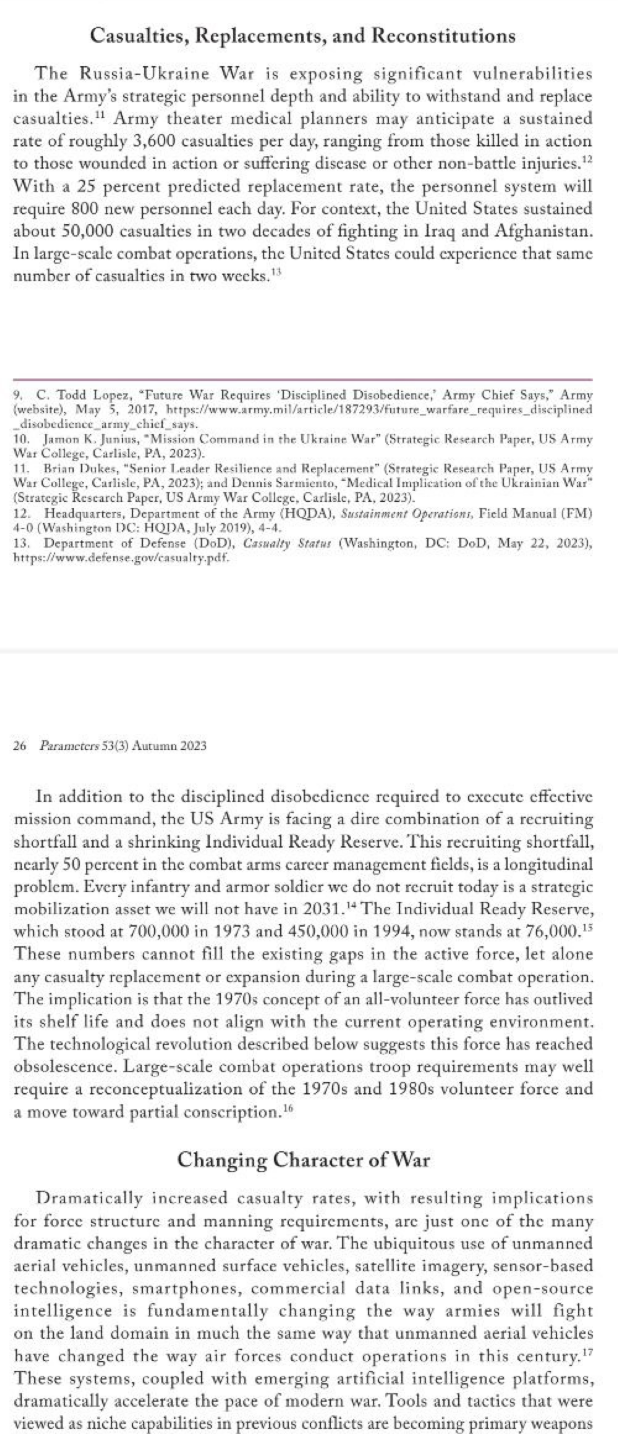You just gotta love how US military say everything openly and in their reports. In particular, it has a forecast of US casualties and mobilization reserves in a conflict of this level.
Thesis:
- military doctors project a [KIA and WIA] casualty rate for the US Armed Forces of 3,600\day.
- The combat replenishment rate is 25% or 800 troops per day.
- In 20 years of combat in Iraq and Afghanistan, the U.S. has lost about 50,000 people.
In a conflict of the Ukrainian level, the U.S. would suffer such losses in 2 weeks.
- The recruitment shortage is a major problem.
- every soldier not recruited today is a strategic mobility asset [IRR or reservists] that the US will not have in 2031**
- IRR was 700K in 1973, 450K in 1994, now at 76K.
- These numbers will not make up for the projected losses.
- the 70’s concept of contract forces is outdated and does not fit the current operational environment.
- The needs of the U.S. Armed Forces for a Ukrainian-level war require a transition to conscription.



Anecdotally: I’ve run into a fair amount of veterans from the Iraq and Afghanistan wars who are very vocal in their opinion that nobody should join the military right now. This isn’t necessarily because they oppose US imperialism; some veterans do oppose it, but they’ve often ovecorrected and become extreme pacifists and Leo Tolstoy types. Most of the anti-military veterans I’ve met are actually rather proud of their “service,” but they think the military is corrupt, the wars are unwinnable, and the common enlisted man is treated like shit. A former special forces guy I sort of know peripherally told me once, matter-of-factly, at a gathering we were both at: “in the the military, an attractive woman knows exactly the amount of value she has.” Voices like these carry a lot of weight in the small towns and rural areas from which recruits are largely drawn.
What does that mean? Is that an euphemism for rape?
Or prostitution. Or getting positions for sexual favours.
Yep, pretty much. Or prostitution in one form or another, like REEEEvolution said below.